Our in-depth investigation uncovers the anti-refugee propaganda machine that fostered xenophobia in Hungary, derailed the E.U. response to the refugee crisis and is spreading to the Czech Republic and beyond.
By Daniel Howden, Newsdeeply.com
PRAGUE AND BUDAPEST – Agnes Urbanics is happy to talk to strangers as long as they speak quietly. Inside the kindergarten where she works in Letkes, a hamlet near Hungary’s northern border with Slovakia, the children are sleeping. Two dozen Hungarian toddlers are having their afternoon nap in one of the classrooms, while Agnes and her fellow teachers tidy up. There is an obvious pride in the new facility, one of the fruits of Hungary’s membership of the European Union, paid for by the structural funds that flowed with it.
The flags of Hungary and the E.U. form a trinity with the cross that hangs above the entrance. It seems an odd place to celebrate defiance of Brussels, but Letkes was among the areas with the highest voter turnout in the referendum in October called to rally Hungarians against an E.U. plan to distribute some newly arrived refugees among member states.
Agnes has strong feelings about the vote: “It was important to send a strong message that we don’t want them. I really hope there will be no resettlement of migrants because it could become really dangerous here.”
The 41-year-old has an open and friendly face, framed by short, graying hair and sensible glasses. She volunteers at church charity drives and says she worries about starving children in Africa. Agnes speaks with a calm and measured tone as she explains that the migrants coming to Hungary are “dirty” and “violent” and that they are “mostly young men who don’t want to work.”
A friend of hers is frightened to walk 150ft (50m) to work at the mayor’s office because she heard a rumor about migrants raping a Hungarian woman in a town about an hour’s drive away.
Agnes’ husband and her oldest son, 20, voted “no” and she says her two younger sons would have voted the same way had they been old enough. In between showing off the gymnasium and the toilet for disabled children, she considers why some E.U. leaders had asked member states to share responsibility for the refugee crisis.
“The E.U., maybe they’re right on other things but not on the refugee question,” she says. “We are not xenophobic, we would help people who really needed help but these people don’t need or want our help.”
The mother of three has never met a Muslim and says she never wants to. She then pauses to think it over and adds, “There must be good Muslims, just not the ones coming here.”
According to referendum returns, more than 98 percent of Agnes’ neighbors agree with her. Fellow “no” voters Peter and Csaba, professional hunters dressed in camouflage gear and green felt hats, are having a beer outside the Letkes Inn.
“We don’t want them here,” says Peter. “We’ve seen them on the news, they’re terrorists. Just look at Paris.”
“I don’t want to have to use my rifle,” Csaba chimes in. It is unclear whether he is joking.
Neither of them sees any parallels between the Hungarians who sought refuge after the failed uprising against communism in 1956 and the Syrians, Afghans and others fleeing conflict today.
“When Hungarians were refugees it was different,” Peter explains. “They respected and accepted the culture of the host countries. These ones don’t care, they are coming like an invading army. They’re breaking into Europe and they want to force their culture on us.”
Inside the inn, a trio of local pensioners nurse a lunchtime drink and discuss the threat of “foreign culture.”
Andras, a retired truck driver, points to the boxy TV set in the corner of the bar: “If I look at the TV, I see the mass rapes in Germany,” he says, referring to a string of sexual assault complaints in Cologne during the 2015–2016 New Year’s celebrations. “In their religion if you see a woman on the street you can rape her. Our culture is different.”
Since no refugees or migrants have come to Letkes, everyone in the village relies on TV and radio reports to tell them what is going on.
Visegrad and the Rise of Xenophobia
A short drive from Letkes is Visegrad, a medieval citadel overlooking a bend in the Danube river. The castle was the setting for a 14th-century meeting of the three kings of Hungary, Poland and Bohemia, where they formed an alliance to counter the Habsburg Empire in Vienna.
More recently, a medieval alliance has been revived as the Visegrad Four, a quartet that has successfully wrecked E.U. plans to respond collectively to the refugee crisis.
Hungary, Poland, the Czech Republic and Slovakia, or the “V4” as they are styled, have all been E.U. members since 2004. Since last year they have worked in concert to derail a quota system meant to disperse some of the record numbers of refugees and asylum seekers who entered the bloc in 2015. The plan was formally abandoned in November.
Three of the Visegrad Four – Poland, Hungary and Slovakia – are governed by nationalist populists, while the Czechs have a recognizably populist president.
These leaders have taken anti-migrant rhetoric far beyond traditional memes of Fortress Europe. Hungarian prime minister Viktor Orban referred to asylum seekers as “poison,” while Czech president Milos Zeman called the flight of people from conflict in Syria, Iraq and Afghanistan an “organized invasion” of Europe.
Public opinion in the V4 countries has been an outlier in European terms. Some 82 percent of Hungarians and 75 percent of Poles said refugees were a burden who took jobs and social benefits from locals, compared to an E.U. average of 50 percent.
The same survey from the Pew Research Center found that 76 percent of Hungarians and 71 percent of Poles said refugees increased the likelihood of terrorism in their country, compared to an average rate of 59 percent across the bloc. Similar hostility can be found in the Czech Republic and Slovakia, but of the quartet of countries only Hungary has had any direct involvement with the mass movement of people.
The exceptional levels of xenophobia have been used by governing populists in the V4 both to block the quota system and impose hard-line restrictions on migration. In the rest of Europe, the specter of Visegrad xenophobia has been used as evidence that irregular migration will inevitably prime the populists and undermine support for liberal democracy.
But this conclusion has serious flaws. New evidence suggests that the reverse may be true: that populist regimes have opportunistically seized on refugee and migrant flows, pumping up xenophobia for political gain.
Colonizing the Media
The April 2010 elections in Hungary brought Viktor Orban back to power after eight years in opposition. The politician has been acknowledged as a “master strategist” and “gifted populist” by even his arch critic, the expatriate Hungarian historian Paul Lendvai. The return to office of Orban’s party, Fidesz, marked the party’s political journey from its early life as a grouping of young liberals, through the center right and now to a virulent new nationalist conservatism.
In his book “My Squandered Country,” Lendvai also describes Hungary’s prime minister as a “ruthless power politician who believes not in ideas but in maximizing his power without any compunction, giving vent to Hungarian nationalism or tapping into fear and prejudice at a moment of crisis.”
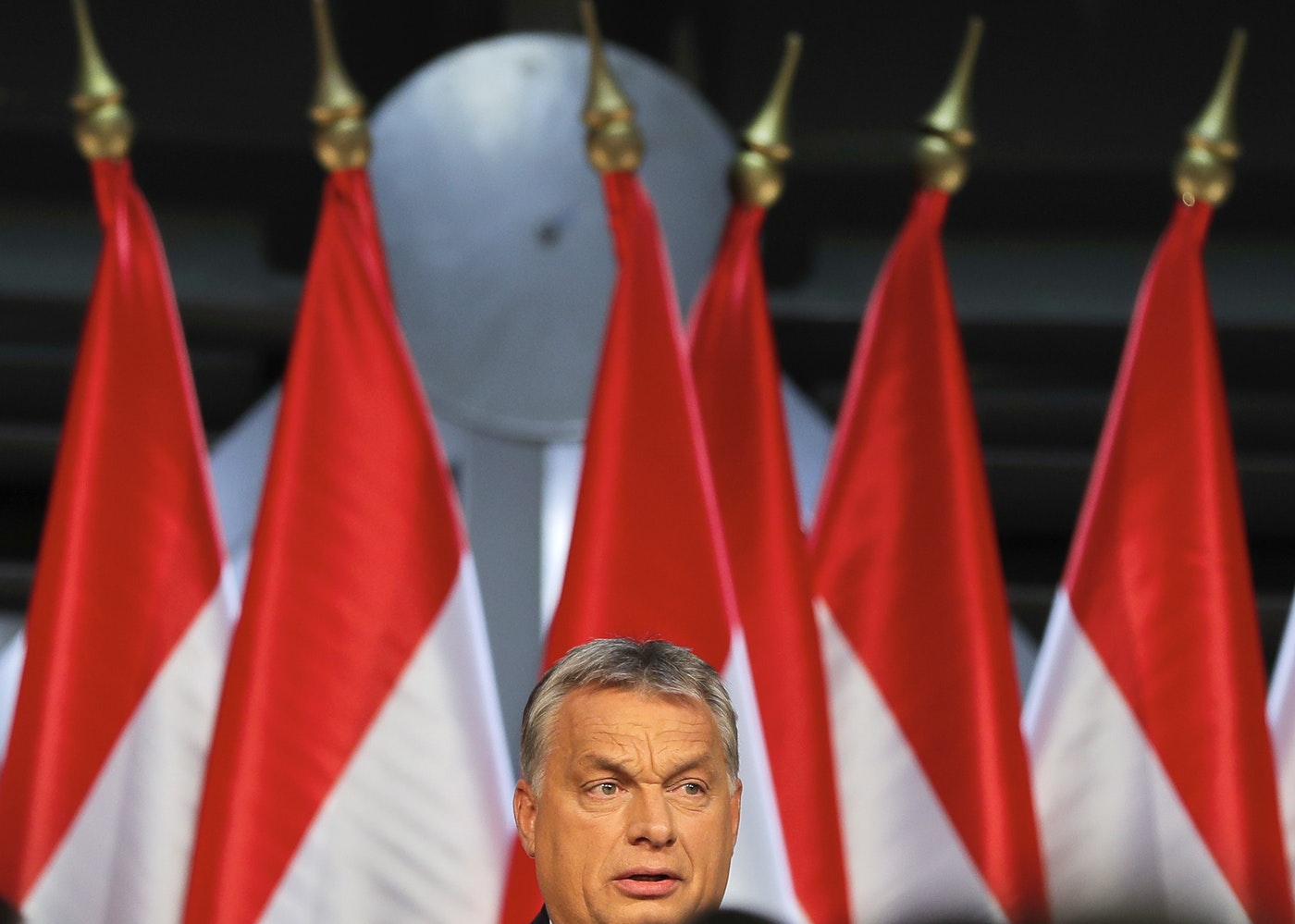
Hungarian premier Viktor Orban looks at supporters before delivering a speech. (AP/Vadim Ghirda)
Orban swept back into power, defeating the scandal-ridden socialists, taking two-thirds of the seats in parliament. This supermajority enabled him to set to work on Hungary’s constitution. Among his first targets were the laws governing the media.
Within three months, Hungary’s media landscape was entirely redrawn.
A single, centralized media authority was given power over everything, from the internet to broadcast licenses, from state media appointments to sanctions against editors of public and private media. The head of the authority was vested with ministerial-level powers and appointed by the prime minister.
Media expert Karol Jakubowicz conducted an analysis of Hungary’s laws for the Organization for Security and Co-operation in Europe and concluded that the laws “simply cannot be described as being compatible with the basic principles of democracy.”
The Hungarian government responded to this kind of criticism with an impressive-looking dossier of precedents from 20 European countries designed to show that it had followed established practice elsewhere in the E.U.
The Center for Media and Communications Studies at the Central European University in Budapest gathered experts from all of the countries cited in the dossier and went through the precedents one by one. What they found was a mixture of exaggeration, inaccuracies and outright misleading comparisons. Their report concluded that the “media regulations cited by the Hungarian government do not serve as adequate precedents for Hungary’s new media laws.”
By the end of the following year more than 1,000 state media employees had been fired, while a trio of journalists went on a hunger strike over what they claimed was manipulation of the national media.
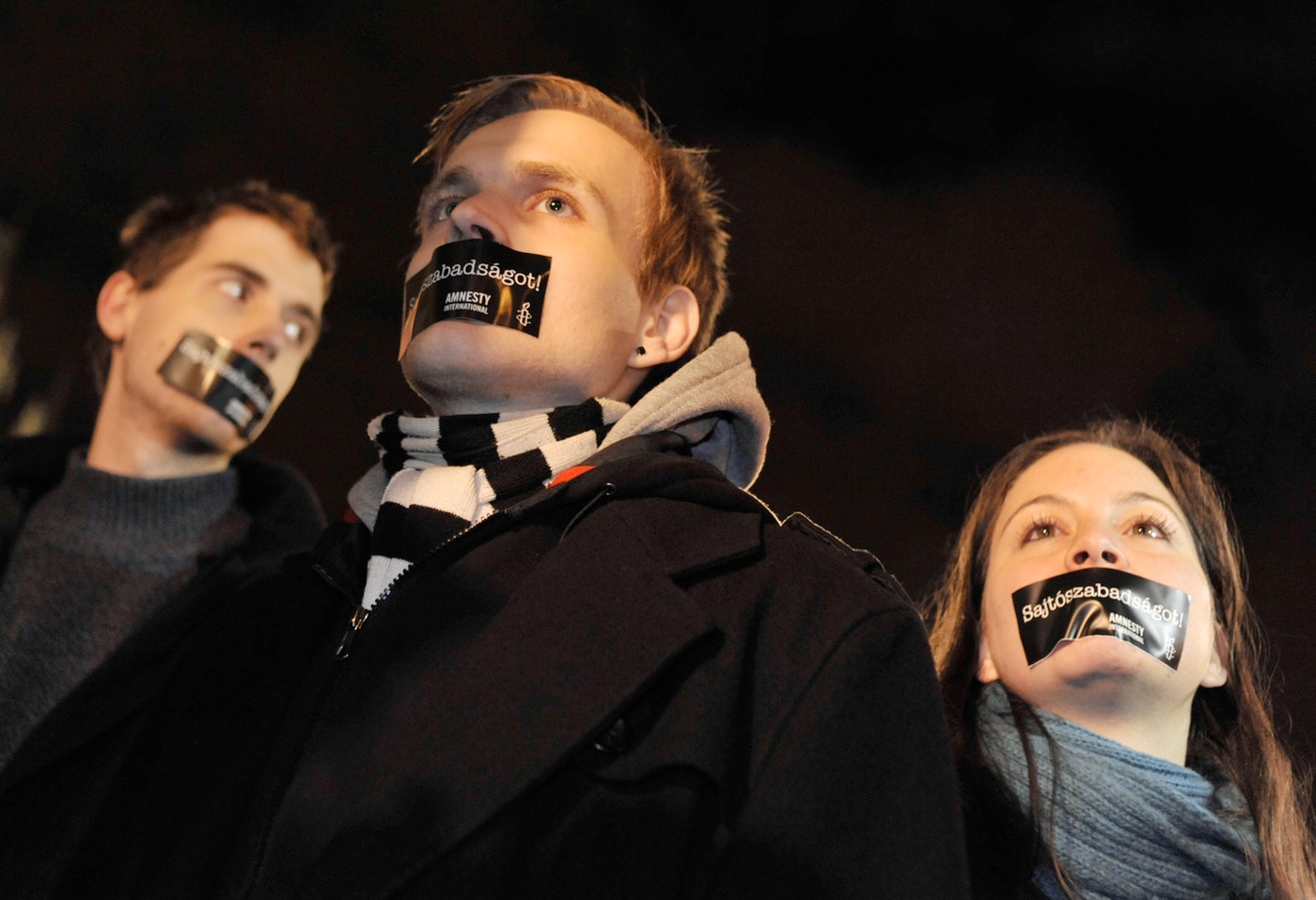
Hungarian Amnesty International activists protest with taped mouth during a demonstration against the government’s new media law in Budapest in 2011. The message, in Hungarian, reads “We want press freedom!” (AP/Bela Szandelszky)
Peter Bajomi-Lazar, editor of the respected Hungarian media studies quarterly Mediakutato, says that Fidesz came back into power with a clear plan to “colonize the media.” He describes the structure put in place as a “pyramid,” with Orban at its peak. “Hungary has not become China, but mainstream media are increasingly exposed to government interference and a quasi-single party rule has been established in the media realm,” he says.
Bajomi-Lazar says that Fidesz’s first-term priority was to capture the state media, and after winning re-election in 2014, the party’s attention shifted to the private media.
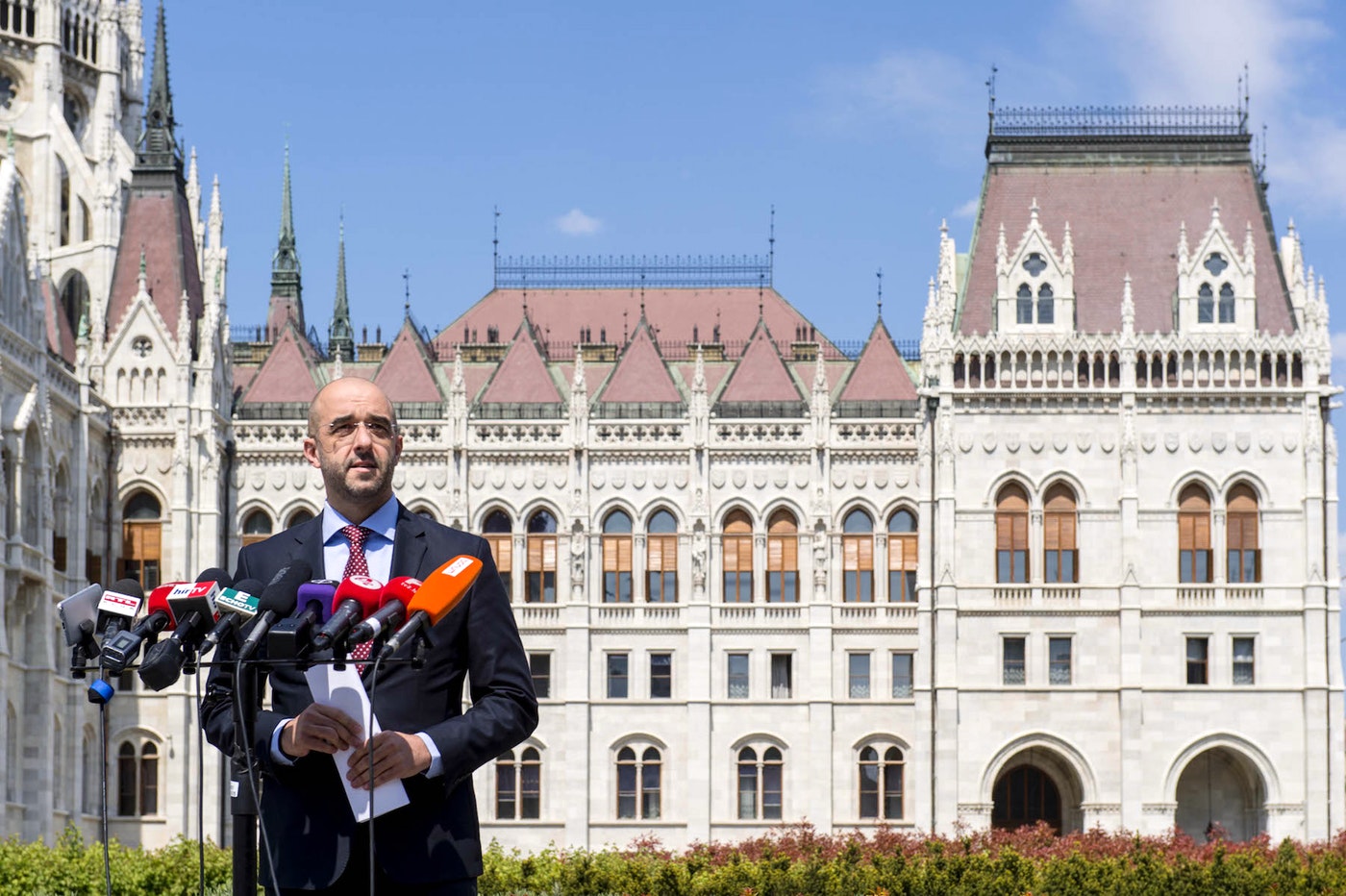
Hungarian spokesman Zoltan Kovacs outside the national parliament. (Hungarian state)
By 2014, Andras Petho, an award-winning Hungarian investigative journalist, was editor of Origo.hu, then the country’s leading online news portal. The media landscape had already shifted, he recalls: “Most of the big media had been either taken over by the government or by businessmen with close ties to the government.”
Public service media had already been stuffed with Fidesz allies, and now party loyalists were being appointed to fictitious roles in newsrooms, with titles such as “news policy consultant,” according to journalists working in state media at the time. There were efforts to put one of these “commissars” into privately owned Origo, says Petho, but it was resisted.
Petho started to come under pressure from the management at Origo after he investigated lavish expenses incurred by Janos Lazar, the head of the prime minister’s office. Although its owners, Deutsche Telekom, were not Hungarian, Origo’s management asked Petho to delay a court hearing on a petition he made with Transparency International for further information on Lazar’s spending. He refused. When the subsequent article ran, Origo’s management asked one of Petho’s colleagues to take it down. They also refused.
The colleague was fired and Petho resigned. Much of his team, including the entire news desk, also walked out. Origo has since become a “mouthpiece” for the government in Petho’s assessment.
Censorship was not confined to major outlets such as Origo – it extended even to specialist publications like the Budapest Business Journal, an English-language weekly with a comparatively small circulation.
The editor of the Budapest Business Journal, U.S. journalist Tom Popper, used his biweekly editorial to write about politics. The journal’s local owners warned Popper early on that if he angered the authorities “they would squash us like a bug.”
When his columns started to highlight corruption and government interference in business he got the anticipated call from the publishers: “I was told to kiss ass or I’d lose my job,” he says.
Popper dialed down the criticism for a few editions, but he started to feel guilty about shirking his journalistic responsibility. He returned to being more critical. Popper was then ordered by the journal’s owners to avoid politics. He resigned.
Since then, Popper says he has “gone back to feeling guilty about not opposing a government that seems determined to reduce democracy by intimidating journalists into silence.”
As well as intimidation, the government has been able to starve outlets it perceived as unfriendly of advertising revenue. This applied both to budgets from state-owned enterprises – Hungary’s nuclear power station is the country’s leading advertiser – and revenue from private-sector businesses with links to Fidesz. The practice of private advertising dollars following public ones into certain publications became known as the “lottery effect” – outlets that published the lottery results were seen as approved places to advertise.
“In a plural landscape, media doesn’t have much of an impact,” says Bajomi-Lazar. “But in Hungary, media have been put in the service of a majoritarian government dedicated to establishing ideological hegemony in an attempt to change public opinion and voting behavior in the long run in order to cement its power.”
The power of this propaganda machine was about to get its fullest demonstration.
Bring in the Scapegoat
After winning a second term with a reduced majority in 2014, Prime Minister Orban suffered a series of setbacks, from corruption scandals to by-election defeats, as well as uproar at an unpopular internet tax, which saw his party’s popularity plunge. From a high in 2014 of 37 percent among eligible voters, Fidesz’s support had dropped to 20 percent by the following spring, according to surveys by Ipsos and Portfolio.
Fidesz also lost all three by-elections held after its re-election. One of those seats was lost to Jobbik, a far-right fringe group that Fidesz had previously encouraged but now saw as a rival.
“It was going badly for them, and they were looking for a way to change the conversation,” says Csaba Toth, a political analyst with the liberal Republikon think-tank in Budapest.
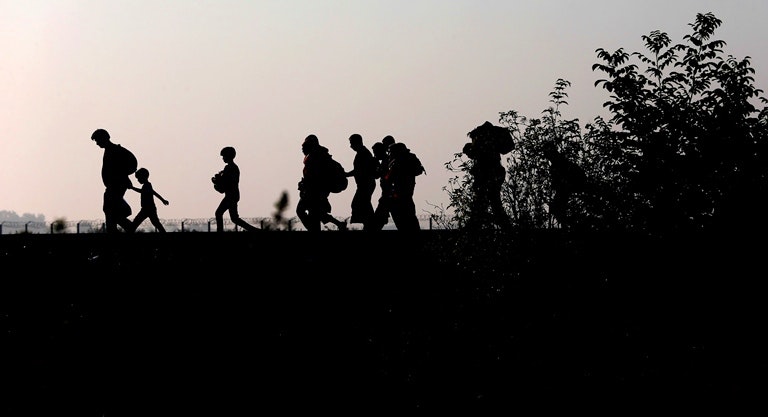
Migrants walk along the railway track after crossing the border between Serbia and Hungary on Sept. 13, 2015. (AP/Matthias Schrader)
Fidesz tried stirring a debate around the death penalty, says Toth, and then experimented with a narrative about defending the “little man,” but neither stuck. “Then they switched to migration and that started to resonate,” he says.
The ground for the anti-migration campaign was laid back in January 2015, in the immediate aftermath of a deadly attack on the offices of the satirical magazine Charlie Hebdo in Paris. While other European leaders spoke up for freedom of speech and religious tolerance, Orban attempted to link the attack to Muslim migrants.
Speaking to Hungarian state media on the sidelines of a Paris free-speech march, he said, “Economic immigration is a bad thing in Europe, it should not be seen as having any benefits, because it only brings trouble and danger to the peoples of Europe.”
The statement was out of step both with Orban’s E.U. counterparts and the fact that the Charlie Hebdo attackers were born in France.
“It became the new element in his political script even though the level of real migration at the time was fairly low,” says Marta Pardavi, cochair of the Hungarian Helsinki Committee, a human rights monitor in Budapest. “From a marginal issue it became number one overnight.”
A Eurobarometer survey of Hungarians’ political priorities in autumn 2014 found that just 3 percent of those surveyed considered immigration a serious issue.
All that was about to change.
The government delivered a letter and questionnaire to every Hungarian of voting age under the guise of a “national consultation on terrorism and immigration.” In a practice that is known as push-polling, 8 million Hungarians were canvassed using 12 leading questions such as: “There are some who think that mismanagement of the immigration question by Brussels may have something to do with increased terrorism. Do you agree with this view?”
In parallel, the government launched a poster campaign with messages that appeared to be aimed at migrants, except they were written in Hungarian: “If you come to Hungary, you cannot take away Hungarians’ jobs” and “If you come to Hungary, you need to respect our culture.”
While people were digesting the posters and the consultation there was a real spike in the numbers of refugees and migrants arriving. Due to its location, Hungary was a staging post on the Western Balkan route (via Turkey, Greece, the former Yugoslav Republic of Macedonia, Serbia or Croatia) into the E.U.
In 2014, Hungary witnessed just over 50,000 irregular border crossings, but some 411,515 would enter during 2015. Whereas Kosovars had been the largest national group in 2014, Syrians were now the largest group, followed by Afghans.
The overwhelming majority of these people did not intend to seek asylum or settle in Hungary. Most of the 176,000 people who did claim asylum during 2015 did so after being detained by Hungarian police. Only 508 people received either refugee status or subsidiary protection, a temporary equivalent. Most refugees and migrants stayed in Hungary for between two and three days, according to the Helsinki Committee.
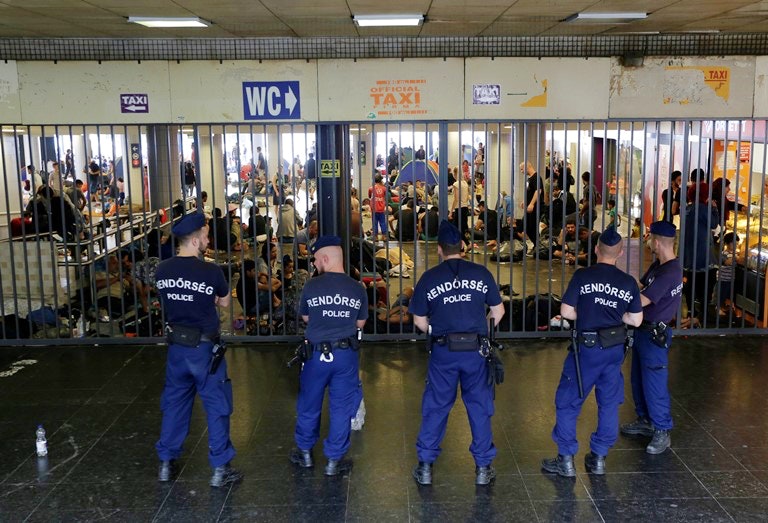
Hungarian policemen guard an entrance to Keleti railway station in Budapest as hundreds of migrants try to board trains to Germany. (AP/Petr David Josek)
Paradoxically, the two main interventions of the Orban government – the construction of a 108-mile (175km) border fence and the closure of Keleti railway station in Budapest to migrants – had the effect of prolonging refugees’ and migrants’ stays in the country.
After its completion in September 2015, the border fence meant new arrivals were channeled through a few entry points where they would have to register for asylum in Hungary. The closure of Keleti, the main railway hub for train routes out of Hungary, effectively created an ad hoc refugee camp in Budapest.
“As long as migration is top of the agenda, their [Fidesz] popularity goes up,” explains political analyst Toth. “They have to keep up the momentum.”
As more border fences appeared across the Balkans and the number of arrivals dropped, that momentum might have stalled. Then, a controversial pact between Turkey and the E.U. in March 2016 was concluded, where Ankara agreed to prevent the departure of refugees and migrants in return for aid money and concessions in its bid to join the bloc. The flood of arrivals slowed to a trickle.
In Hungary, migration remained item No. 1 on the agenda with the announcement of the “quota referendum” to be held in October. The plebiscite was in opposition to an E.U. plan to establish mandatory quotas to help in relocating 120,000 refugees from front-line states such as Greece and Italy. It called for Hungary to resettle 1,294 people.
“The communications, the fence, the [referendum] campaign all strengthened the government,” says Bank Levente Boros, a senior analyst with the Nezopont Institute, a government-funded Hungarian think-tank. “It was very good politics.”
Boros, who refers to migrants and refugees as “the siege force at Hungary’s gates,” says the switch to a national conversation dominated by migration had wrong-footed the left and liberal opposition parties, while the hard-line rhetoric of Orban had left the far-right Jobbik with no point of differentiation.
A new state poster campaign was begun that would occupy 40 percent of Hungary’s entire outdoor advertising capacity. Slogans for the sea of blue posters included: “The Paris attacks have been committed by IMMIGRANTS” and “Since the migrant crisis harassment of women has suddenly increased.”
“The power of these messages is that they were everywhere; if you walked a few blocks you would see one,” says Orsolya Jeney, country director of Amnesty International in Hungary. “You’ve never seen such a campaign telling you what to think.”
The “no” campaign, led by the prime minister, was in full swing during July and August this year when state TVenjoyed peak audiences for the European Soccer Championships and the Olympics. Once every hour, coverage would be interrupted by a short news bulletin dedicated to negative coverage of migrants. Much of it focused on lurid accounts of ungrateful, dangerous or dirty migrants.
“If a migrant farted in Calais it was big news in Hungary,” says Amnesty’s Jeney.
As the October 2 vote approached, the main state television channel M1played a prolonged series of short interviews with Hungarian celebrities, from soap opera actors to athletes and singers, all explaining why they were backing a “no” vote.
An investigation into the cost of the state-financed “no” campaign, by the independent Hungarian outlet Atlatszo, put the total bill at $59 million. In comparison, in the U.K., the public grants to the official Leave and Remain campaigns in the Brexit referendum came to $1.5 million, while a further $12 million of public money was spent on leafleting Britons in support of Remain.
Agnes Urban, from the Budapest media watchdog Mertek, conducted a content analysis on the news output of Hungary’s five main TV stations in the buildup to the vote. She found an overwhelming bias in the coverage.
“Four of the five channels were practically anti-refugee,” she says. “Theoretically we know it’s still possible to find different voices, but from the point of view of an ordinary person they were manipulated.”
When the referendum results were returned on October 2 they delivered the resounding “no” vote the government had pushed so hard for. More than 98 percent of those who voted rejected E.U. quotas. But there was a sting in the turnout: At 44 percent, it was considerably lower than most experts had expected. And critically, it was also short of the 50 percent threshold required to validate the result.
The Editor is God, You Cannot Argue With God
While the first rumblings of the “quota referendum” campaign were being heard in Hungary in early summer, Robert Brestan, a young Czech investigative reporter, received an unexpected call in Prague. A source inside the most-watched Czech TV station, Prima, told him that they had an audio recording of an extraordinary editorial meeting. It was said to feature direct orders from senior management, dictating to journalists that they were to present refugees and migrants as a threat.
“It was clear that Prima TV had taken an anti-refugee stance, and there had been rumors, but there was no evidence,” says Brestan.
Unlike the other Visegrad countries, the Czech Republic has a social democratic prime minister. But populists, such as the president, Milos Zeman, are on the march and have drawn sympathetic coverage from private media, often by appealing to patriotic sentiment and portraying Czech culture as being under attack.
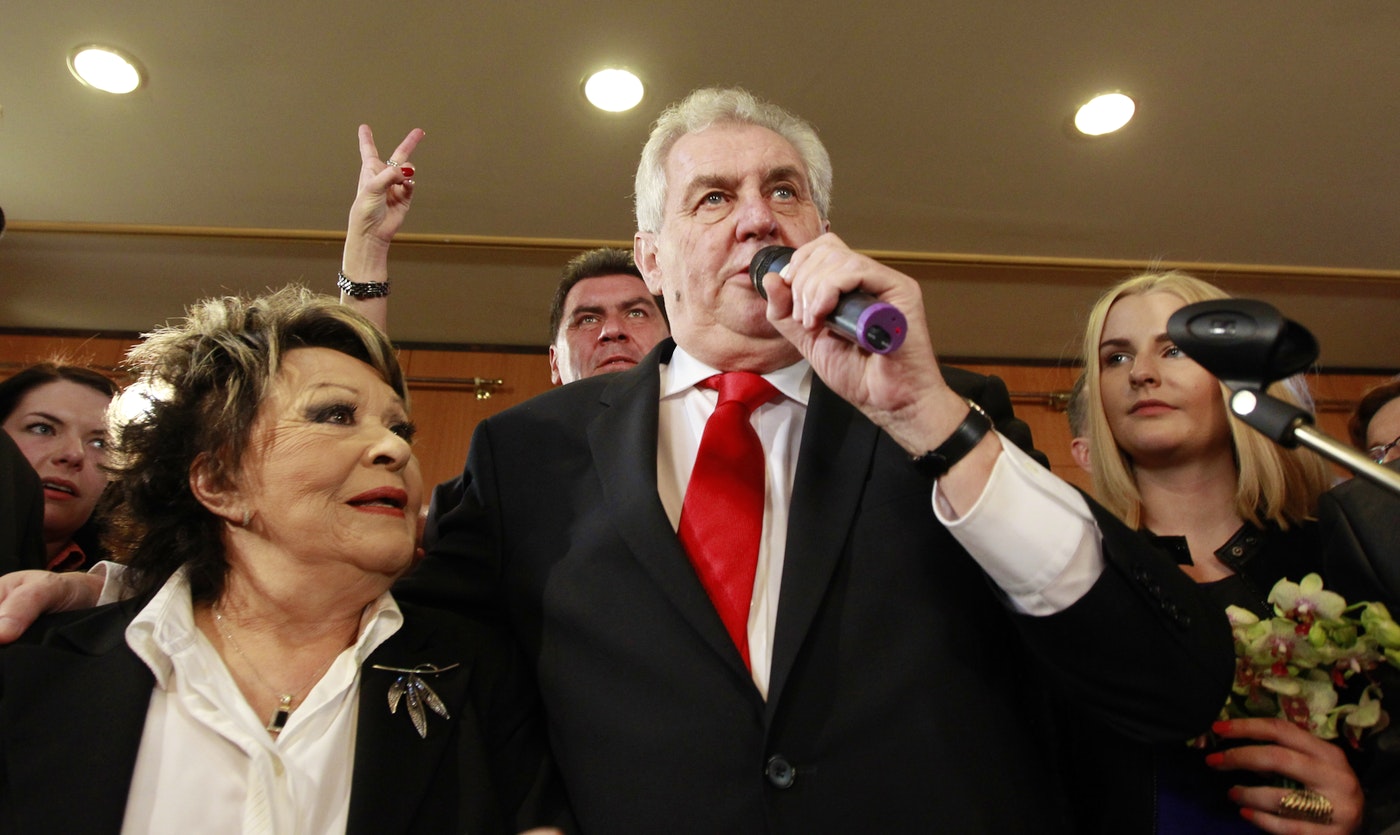
Czech president Milos Zeman. (AP/Petr David Josek)
Prima had given considerable play to Zeman’s rants against refugees and migrants, and the source inside the channel insisted that Brestan, a former BBC journalist, should undertake a thorough content analysis of the station’s output before and after the meeting took place.
Brestan pored over every bulletin in a five-week period either side of the relevant date. The difference he found was palpable. “It was night and day,” he says.
In the weeks prior to the meeting, news reports with a positive slant on refugees constituted 9 percent of output, negative reports 27 percent and neutral ones 53 percent. After the meeting, positive reports disappeared entirely, neutral reports dropped to 28 percent and 72 percent of coverage went negative.
News presenters began to introduce short reports, or “packages,” by editorializing their content, Brestan explains. The packages themselves focused almost exclusively on negative stories about refugees.
“They started to get really creative with camera angles and with facts,” he says.
Duly satisfied, the Prima source released the full recording in June 2016. In what came to be known as the “migration edict,” Prima editor-in-chief Jitka Obzinova can be heard telling journalists during a September 2015 meeting that the station will take a clear position on the crisis, namely that refugees represent a “threat” and that employees who are not happy with this can leave. “You have an employer with an opinion,” the journalists are told, and editors “are gods and you cannot argue with God.”
READ THE FULL TRANSCRIPT
“The staff at Prima knew that they were being told to violate even the most basic journalistic ethics,” says Brestan, whose publication Watchdog [in Czech] is run as a nonprofit. One member of staff resigned on the spot, while another left soon after the meeting. Others, including Bohumil Roub, started to get a lot more time on screen. In one notorious package from the border in Hungary, Roub told Czech viewers of the main evening news that 50 million migrants were coming their way. In reality, the Czech Republic received 1,525 applications for asylum in 2015.
Prima, which is facing possible sanctions from the Czech broadcast authority for breaking guidelines on balanced reporting, has denied taking a stance on the refugee crisis and downplayed the secret recording. At the same time, it has conducted internal investigations in an effort to uncover the mole, Brestan says, and has banned mobile phones from certain editorial meetings.
The Czech example suggests that populists in the region are looking at the influence of the politicians over the media in Hungary and seeking to import the same model.
So far, an audio recording equivalent to the “migration edict” has not surfaced in Hungary. However, several journalists working in the national TV and radio stations, speaking on condition of anonymity, have confirmed to Refugees Deeply that they received similar orders from senior editors inside Hungarian state media.
One experienced reporter said the construction of a propaganda machine was well underway before it was used to manufacture fear and hatred of refugees: “Hundreds of good and competent colleagues were kicked out and there were directions on what we should and should not do. We’re left with people who will follow orders, either from conviction or because they’re afraid,” the reporter reveals. “The peak of this came with refugees.”
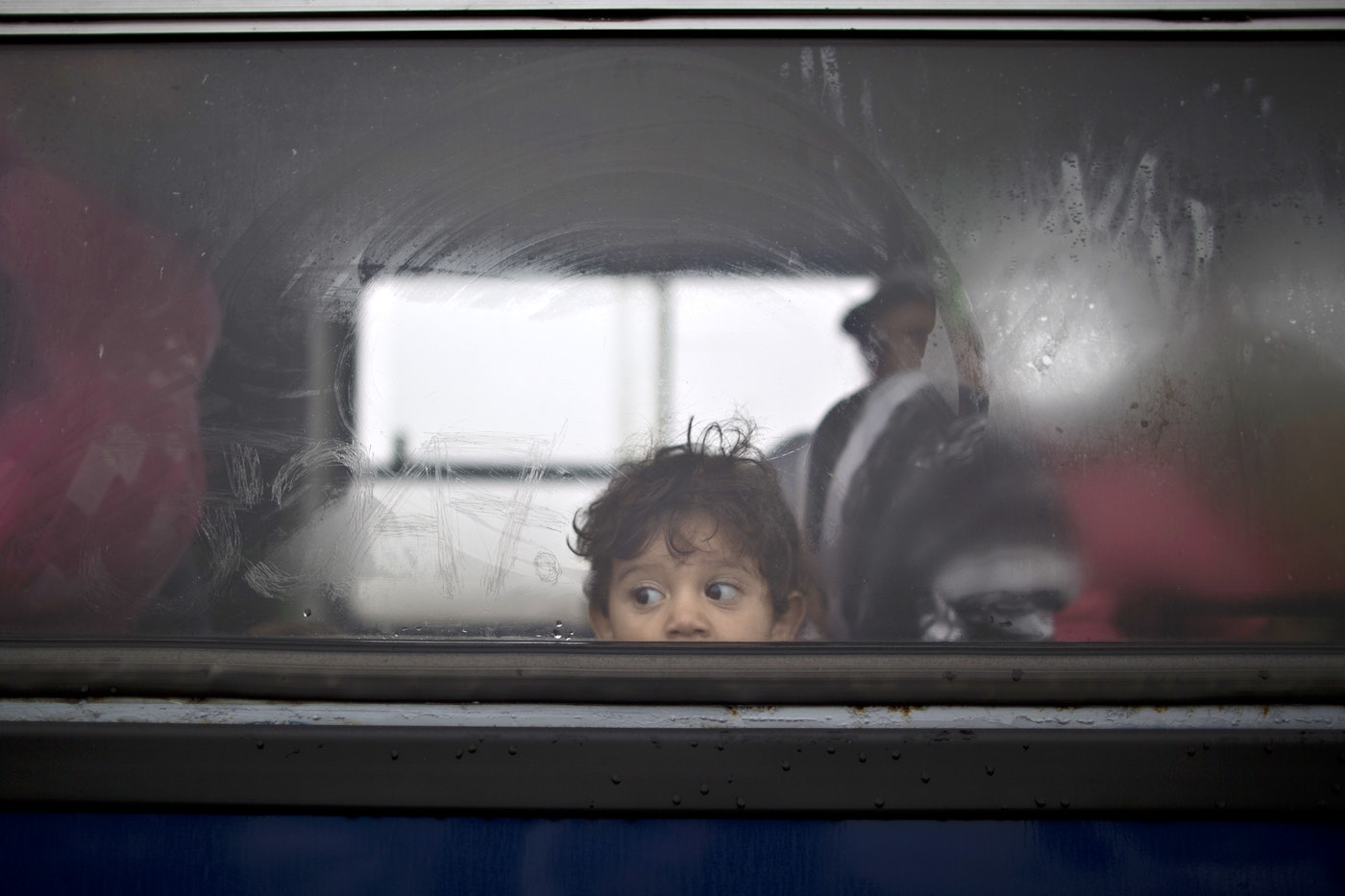
A Syrian refugee child looks out of a bus that will take him and his family to the center for asylum seekers in southern Hungary. (AP/Muhammed Muheisen)
In September 2015 an employee at M1, the main state TV channel, took a screengrab of an instruction from editors not to show children in its coverage of refugee issues. A confused defense followed in which the state media authority said the order aimed to protect the children themselves, while someone described as a “government-friendly journalist” told the Guardian that the channel did feature children.
One of the clearest edicts concerned the word “refugees,” which has all but disappeared from coverage of the refugee crisis. There are words in Hungarian for refugee (“menekult”) and asylum seeker (“menedekkero”), and previous refugee crises were discussed using the word “bevandorlo,” which translates roughly as “incomer.” Instead of these words, a foreign-sounding imposition from Latin was deployed: “migrans.”
“When it was used in Hungarian it was an adjective, and suddenly it’s a noun,” says one correspondent from national radio who was called by an editor before an interview and instructed to use the word “migrans” on air.
“It was clear that there was a strategy not to use the word refugee. It started with the government and media just followed it,” the correspondent says.
Two more journalists from the state media have confirmed the appearance of “commissars,” or party hacks, from Fidesz, in newsrooms: “They don’t have to say anything, everyone knows who they are and why they are there,” says a state media journalist.
Several state media insiders also expressed anger at the use of a former German soldier with links to far-right groups, including Germany’s Pegida, as a “security expert” on M1. A naturalized Hungarian, Georg Spottle, has been one of the two most prominent experts invited to discuss migration.
In one segment, typical of his expert insight, Spottle, who claims to have served with the German military in Afghanistan, told viewers that Afghan imams told Muslim men that all European women were prostitutes. A concerned Hungarian journalist decided to trace some of the conspiracy theories that Spottle was peddling as facts. Many of them led back to extremist or fake news sites such as Junge Freiheit, Compact and Kopp Verlag, which are produced by German neo-Nazi groups and right-wing extremists.
“He is there on primetime national television spreading stupid and dangerous lies,” complains the journalist who looked into the pundit.
The Limits of Propaganda and Panic
Endre Sik has been measuring levels of xenophobia in his native Hungary since 1992. When he is not teaching sociology at Eotvos Lorand University, Viktor Orban’s alma mater, the professor works from the study of his home in the hills of Buda. It’s a modest room decorated with bookshelves where the research tomes are broken up by a collection of works by Isaac Asimov, Thomas Mann and Terry Pratchett, a writer of comic science fiction. The last of these hints at a modern sense of mischief.
“Hungary, without any manipulation, is quite xenophobic,” Sik admits. “It is one of the first things I tell my sociology students.”
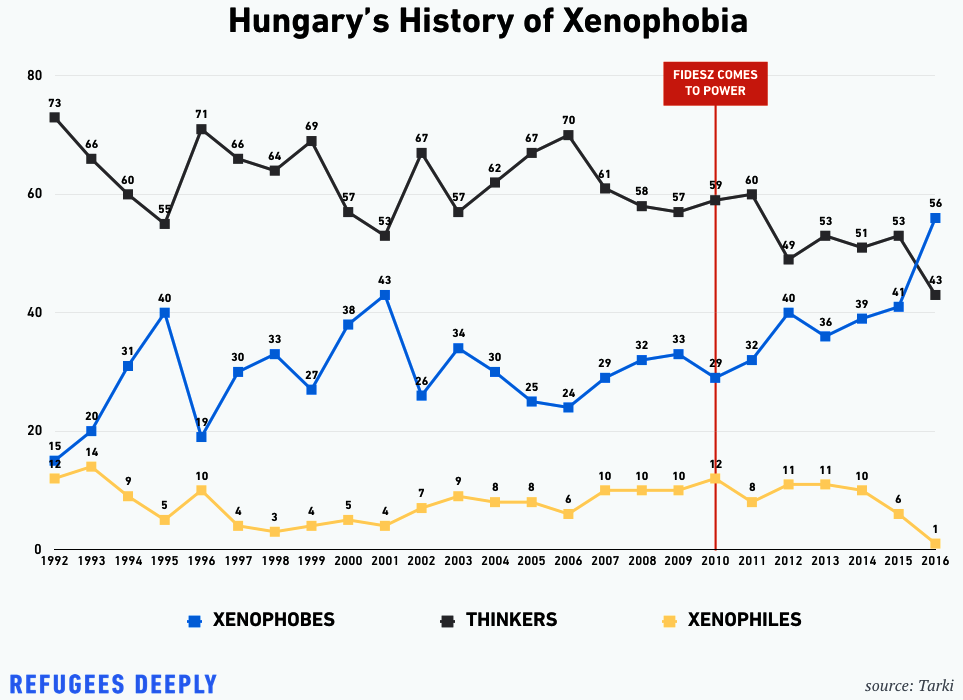
He has found what he calls the “natural level” of xenophobia to be somewhere between one-quarter and one-third of Hungarians.
The observation is based on 24 years of repeating the same question to a 1,000-strong representative sample of the population in face-to-face interviews for the TARKI Social Research Institute. The question is: “Would you agree that no asylum seekers should be accepted in Hungary?”
He divides respondents into three categories depending on their response. Those who answer “yes” are the “xenophobes,” those who reply “it depends” are the “thinkers” and those who answer that all asylum seekers should be accepted are his “xenophiles.”
When the survey results are plotted on a graph they show that since 2010, when Orban and Fidesz took power, levels of xenophobia have climbed “sharply” above their historical upper limit. The latest results, which include data up to the end of October 2016, show a record 58 percent of respondents as xenophobes. Xenophiles have essentially disappeared, dropping below 1 percent, from a historical average of 10 percent.
A more nuanced point emerges from studying the “thinkers,” which challenges the idea that flows of refugees and migrants are driving xenophobia. In mid-2015, when the largest number of refugees and migrants were transiting Hungary, the number of thinkers expanded. Since the flows have all but stopped many of the thinkers have returned to being xenophobes.
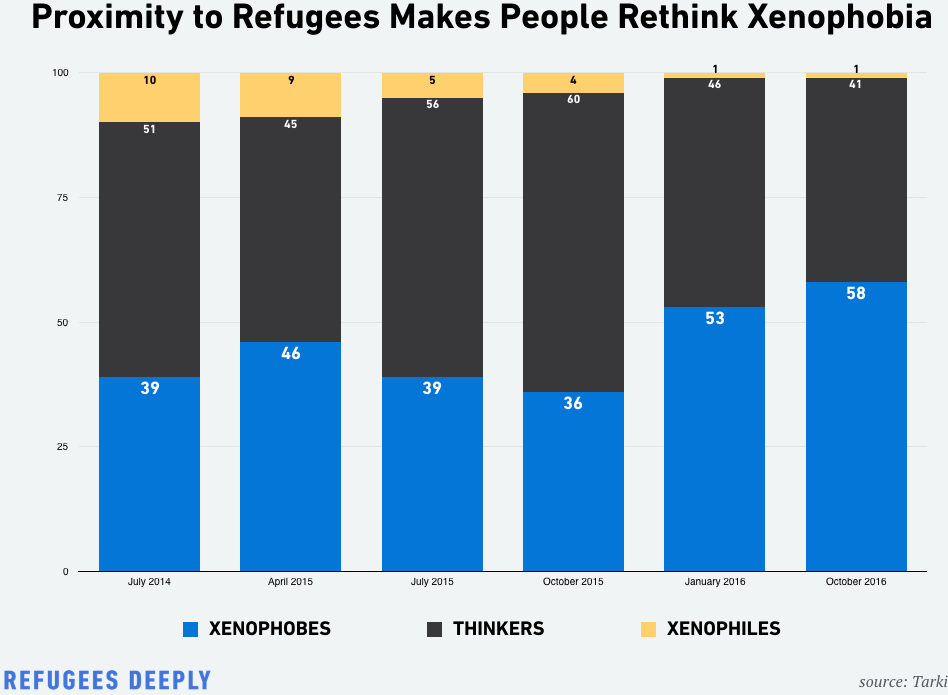
“Our explanation is that when there are refugees it works against the level of xenophobia,” says Sik. “When people see actual refugees, they think about it. They don’t buy the state propaganda at face value.”
The referendum was a stunt, a “fake,” he says, and the culmination of an unprecedented propaganda effort.
“No other country invested so much for an entire year,” says Sik. The purpose of the campaign was to restore Fidesz’s popularity as the essential party: “They were scaring people and then telling them only the government can defend them from outsiders who will destroy their world.”
An analysis of the October referendum results by media monitors Mertek appears to back Sik’s findings. When they looked at the turnout by voting precinct they found the lowest turnout in the Budapest area around Keleti railway station. This was the place that was briefly transformed into a refugee camp as authorities barred refugees and migrants from boarding trains to Austria.
If the Hungarian government’s response to the crisis was driven by public opinion and not the other way around – as it insists when it argues that Hungary is homogenous and unaccepting of foreign cultures – Keleti residents should have been voting in hordes. But they did not. The majority of them sat it out while a significant minority of those who did vote spoilt their ballot papers in protest.
In the Czech Republic, the relationship between propaganda and public attitudes has worked differently. Where neither the government nor the media are under the sway of a single party or ideology, biased coverage of the refugee crisis can appear to make commercial sense when generalizations about public attitudes are allowed to go unchallenged. When 80 percent of the population is reported to be anti-migrant, why not get your news bulletins to reflect back those prejudices?
Daniel Prokop, a leading Czech analyst, decided to use the same techniques that a consumer brand would in analyzing what people really care about and what is shaping attitudes. The director of social and political research at the research firm Median, he applied a simple matrix to the xenophobic consensus.
Czech president Zeman is fond of quoting the fact that he enjoys 80 percent public support for his blanket opposition to the resettlement of refugees. This is reinforced in the media, where Czechs are divided into the eight out ten who oppose receiving refugees and the other two who support it.
Prokop decided to challenge this binary way of understanding public views. He assembled a representative group of Czechs and mapped out their attitudes to refugees against the twin axes of attitude and importance. Respondents were placed into six sectors based on their attitudes to migrants and refugees and how important they thought the issue was nationally. Those in the top-right sector, who are strongly opposed to receiving refugees and regard themselves as strongly involved drop from 80 to 29 percent.
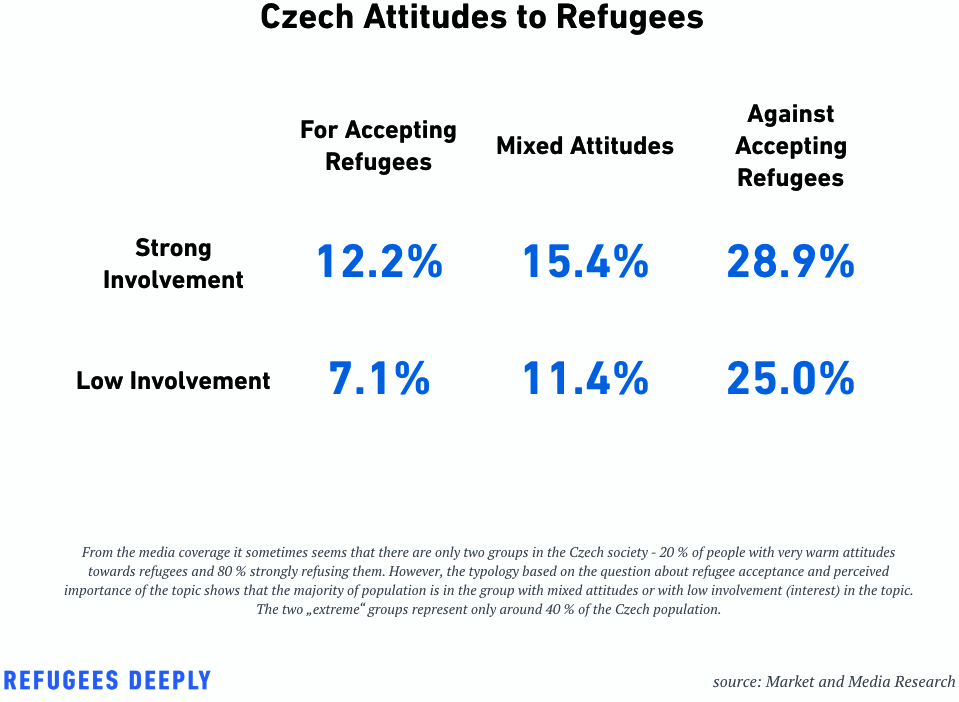
“The media want to feed the prejudice of their viewers,” Prokop explains. “Even when they don’t properly understand them.”
When he asked a different and more nuanced set of questions about migration, half the respondents were open to having refugees resettle in their own village, Prokop found.
“It is self-fulfilling, though, if you have enough of the negative coverage you eventually create these attitudes.”
Epilogue: Exporting the Machine
Nestled in the backstreets behind London’s frenetic Oxford Circus where the shops give way to the exclusive doctors’ surgeries on Harley Street, lies Cavendish Square. Number 4, an appealing 18th-century townhouse with a portico entrance, is home to one of London’s newer political consultancies.
This is the address given by Companies House, the U.K. business register, for Danube Consulting, a recent venture whose shareholders are listed as Arthur J. Finkelstein and Arpad Habony. The former is a past master of negative political campaigning, who honed his craft amid the checks and balances of the U.S. democratic system but whose expertise is increasingly sought after in younger and less stable democracies. The latter has been the unacknowledged spin doctor to Hungary’s prime minister, Viktor Orban.
Budapest-born Habony is known in political circles in Hungary as Orban’s chief political adviser but he has never been given a formal role within the government. Janos Lazar, the prime minister’s chief of staff, has acknowledged meeting regularly with Habony, but Orban himself has been more reticent. Habony’s opaque status has prompted parliamentary questions from the opposition and the censure of a popular catholic priest who recorded a video asking the prime minister “Who is Arpad Habony?”
Meanwhile, New Yorker Finkelstein is a veteran conservative political strategist whose aversion to publicity saw him dubbed “the Republicans’ invisible man” by CNN.
Now, 70, Finkelstein is credited with pioneering the use of “liberal” as a line of attack in American politics, which earned him the moniker “merchant of venom.” After working in the Nixon White House, he built up a client list of staunch conservatives, including Senator Jesse Helms and George Pataki at home, and Benjamin Netanyahu and Ariel Sharon in Israel, where he also helped elevate Avigdor Lieberman from the far-right fringe to foreign minister.
Orban has been elusive on the nature of Finkelstein’s role in Hungary but admitted to a reporter in May 2015 that there was ongoing contact. The website of GEB International, a consultancy run with Finkelstein’s longtime business partner, George Birnbaum, credits Finkelstein with delivering Orban’s 2010 election landslide in its “highlights” section.
Danube’s managing director is listed as Tamas Lanczi and has the same name and date of birth as the senior adviser at Hungarian government-funded think-tank the Szazadveg Foundation, whose president is also his father, Andras Lanczi.
For now, Danube Consulting is listed as “dormant” by Companies House. There is no menu of its services nor any statement of its future plans. But its main shareholders have been instrumental in the creation of a formidable political communications machine in Hungary – one that was able to defy the E.U. over the refugee crisis and emerge strengthened. The playbook in which refugees can be scapegoated for political gain is being widely followed in the V4 countries and beyond.
“It’s one of the most professional political outfits in Europe,” says Csaba Toth, a liberal political analyst who regularly spars with the subordinates of Orban’s shadowy advisers in Budapest.

A Hungarian military truck passes a barbed-wire section of a 108-mile (175km) fence on Hungary’s southern border with Serbia near Kelebia, 110 miles (178 km) southeast of Budapest, Hungary, on Friday, Aug. 7, 2015. (Sandor Ujvari/MTI via AP)
“Hungary had an anti-other feeling that was always present,” Toth concedes. “But they took this predisposition and turned it into a reality by artificially heightening the level of fear and inflating the importance (of refugees). It made it real for the people. They thought they were under attack.”
The commercial and political lessons learned from the manufacture of hatred in central Europe warrant the urgent attention of those who seek to defend human rights and public service media, not just those would profit from them.

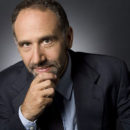
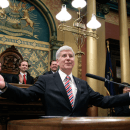
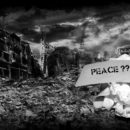
 (909) 335-8100 ·
(909) 335-8100 ·  (909) 335-6777
(909) 335-6777 Email:
Email: